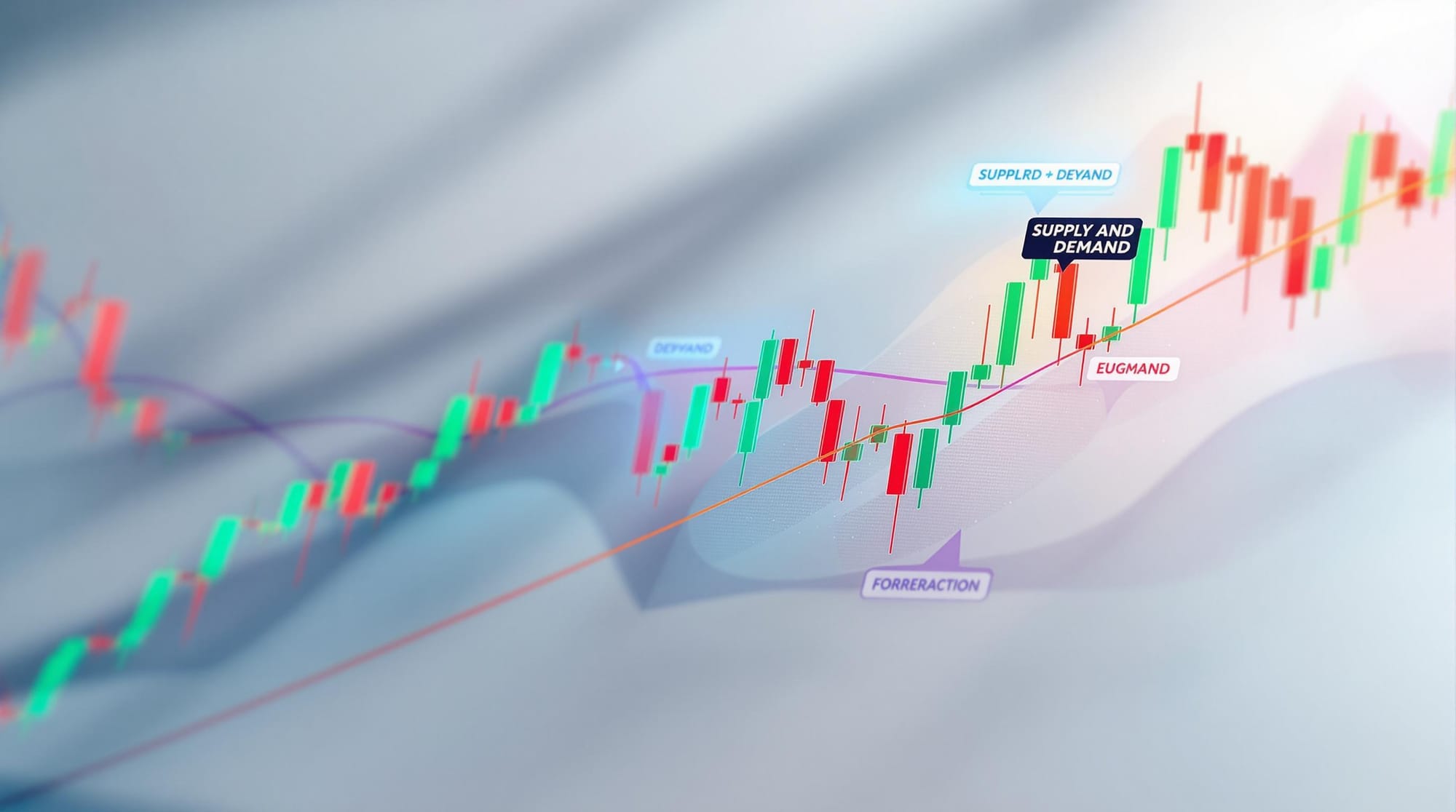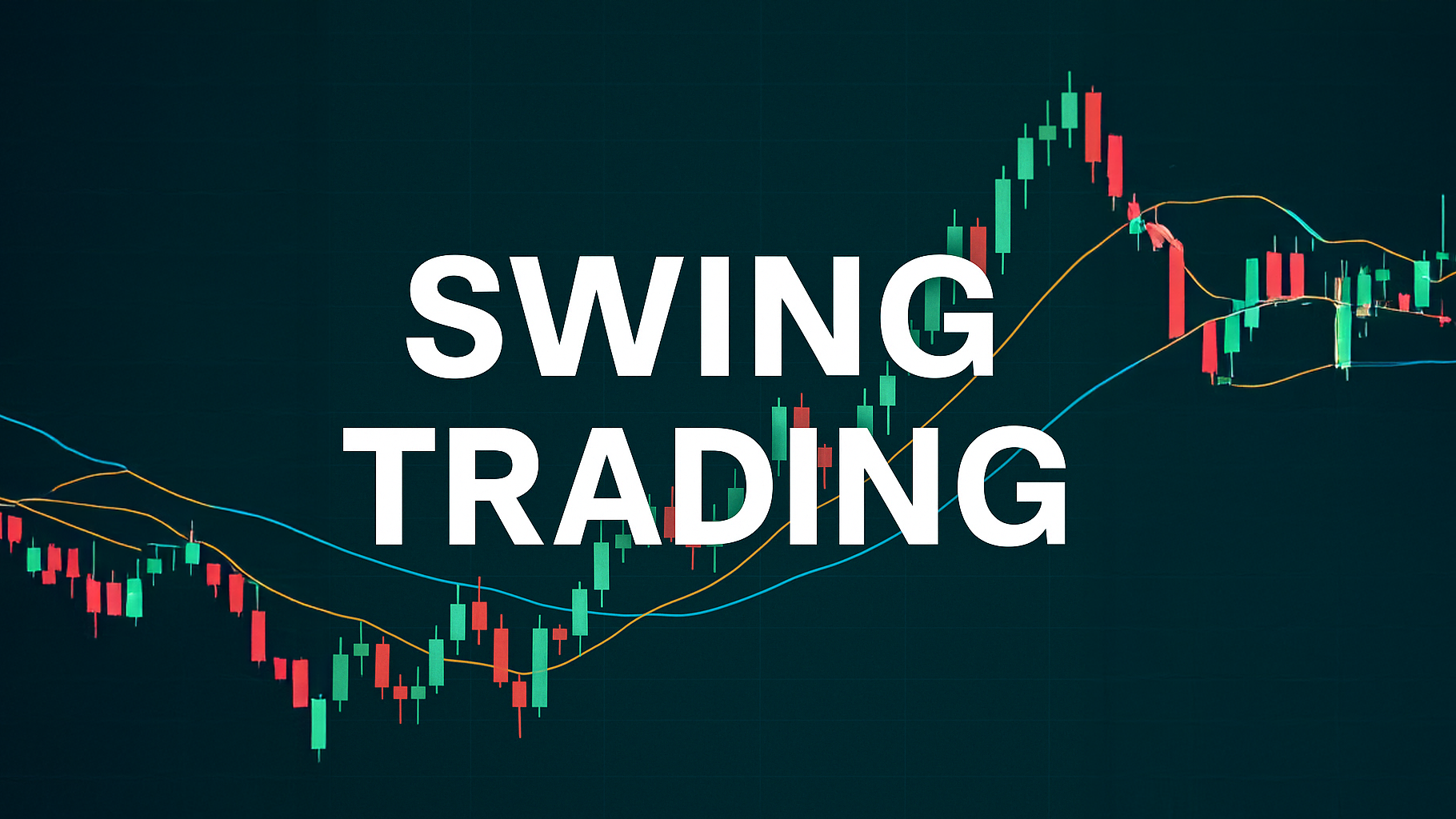Learn how to identify supply and demand zones to improve your trading strategies and decision-making process.
Supply and demand zones are key areas in trading where significant buying or selling activity occurs, often leading to price reversals or trend continuations. These zones are shaped by institutional orders and can help traders make better decisions, manage risks, and improve trade timing. Here's what you need to know:
- Supply Zones: Form when selling pressure exceeds buying interest, causing prices to drop.
- Demand Zones: Appear when buying pressure outweighs selling interest, driving prices up.
- Patterns to Spot Zones: Look for Rally-Base-Drop (RBD) for supply zones and Drop-Base-Rally (DBR) for demand zones.
- Volume Analysis: High volume confirms strong zones, while declining volume in the base signals accumulation or distribution.
- Tools: Use automated toolkits like the LuxAlgo PAC Toolkit along with manual analysis for precise identification.
Quick Comparison: Supply/Demand Zones vs. Support/Resistance Levels
| Characteristic | Supply/Demand Zones | Support/Resistance Levels |
|---|---|---|
| Width | Broad price ranges | Narrow price points |
| Reliability | More dependable | Prone to false breakouts |
| Trade Entry Flexibility | Multiple entries within the zone | Limited to specific price points |
To trade effectively, combine these insights with multi-timeframe analysis, volume data, and strategies like reversal or continuation trades. This approach helps you align with institutional order flow and make informed trading decisions.
Master Supply & Demand Trading
Finding Supply and Demand Zones
Spotting supply and demand zones involves recognizing key price patterns and leveraging analytical tools effectively. Here’s how you can pinpoint these crucial trading areas with confidence.
Price Patterns: RBD and DBR
Two essential patterns, Rally-Base-Drop (RBD) and Drop-Base-Rally (DBR), reflect institutional trading behavior and help identify supply and demand zones.
-
Rally-Base-Drop (RBD): This pattern signals a supply zone. It begins with:
- A sharp price rally
- A consolidation phase (the base)
- Followed by a significant price drop
-
Drop-Base-Rally (DBR): This pattern highlights a demand zone. It starts with:
- A sharp price decline
- A consolidation phase (the base)
- Followed by a strong upward price move
The base represents compressed price activity, often indicating accumulation or distribution by major market participants [2].
Volume Analysis for Evaluating Zones
Volume data plays a key role in assessing the strength of supply and demand zones. Here’s how traders can interpret volume characteristics:
| Volume Characteristic | What It Means | What to Do |
|---|---|---|
| High volume at zone formation | Strong market participation | Pay close attention to these zones |
| Declining volume in the base | Quiet accumulation/distribution | Prepare for a potential breakout |
| Volume surge during breakout | Confirms the zone’s validity | Consider entering a trade |
| Above-average relative volume | Greater reliability | Focus on these zones |
Using the LuxAlgo PAC Toolkit for Zone Detection
The LuxAlgo Price Action Concepts (PAC) Toolkit simplifies the process of identifying supply and demand zones. It provides:
- Real-time detection across multiple timeframes
- Clear visual markings of zones
- Adjustable parameters that align with institutional order flow dynamics
While the PAC Toolkit automates much of the process, it works best when paired with manual analysis. For example, if the toolkit flags a potential zone, verify it by checking for RBD/DBR patterns and analyzing volume data before making any trading decisions [2].
This combination of automated insights and manual verification creates a more thorough and reliable approach to identifying trading opportunities.
Zones vs Support and Resistance
Grasping the difference between supply/demand zones and traditional support/resistance levels is key for shaping effective trading strategies. While both help pinpoint potential price turning points, they differ in structure and application.
Comparing Zones and Levels
Supply and demand zones cover broader areas of price activity, whereas support and resistance focus on specific price points. Zones align with the base phases seen in RBD/DBR patterns, giving traders more time for confirmation. Their reliability often comes from originating in institutional order clusters.
| Characteristic | Supply/Demand Zones | Support/Resistance Levels |
|---|---|---|
| Width | Cover broader areas across multiple prices | Narrow ranges or single price points |
| Reliability | Tend to be more dependable due to market interest | Prone to false breakouts |
| Trade Entry | Allow multiple entries within the zone | Limited to exact price points |
These differences call for tailored trading strategies.
Strategic Applications
Zones allow for more flexible trade management:
- Gradual entry within the zone
- Using wider stop-loss levels
- Waiting for confirmation signals before committing
The choice between zones and levels depends on market conditions. Zones are ideal for volatile markets, offering better setups for trend continuation. On the other hand, support and resistance levels are more effective in range-bound markets, aligning with price patterns previously discussed.
sbb-itb-cf0ed88
Trading with Supply and Demand Zones
Once you've identified supply and demand zones, there are two main strategies to consider: reversal trades and continuation trades. These approaches leverage the institutional order flow concepts we've discussed earlier.
Reversal Trade Methods
Reversal trades focus on spotting price changes when it reaches a supply or demand zone. The goal is to wait for clear signals before taking action.
Zone Entry Validation
Look for candlestick reversal patterns and a noticeable increase in volume at the zone's edges. Adding Fibonacci levels to your analysis can help confirm potential reversals, tying back to institutional accumulation or distribution behaviors.
False Breakout Strategy
This method involves trading after the price fakes a breakout and reverses. Place stop-loss orders beyond the extreme level of the false breakout. Here's how it works:
| Breakout Type | Entry Criteria | Stop-Loss Placement |
|---|---|---|
| Bull Trap | Price breaches the supply zone, then reverses | Above the false breakout high |
| Bear Trap | Price breaches the demand zone, then reverses | Below the false breakout low |
This strategy takes advantage of institutional order flow, exploiting traps set by market dynamics.
Continuation Trade Methods
Continuation trades follow the current trend and often provide better risk-to-reward opportunities due to momentum in the market.
Multiple Timeframe Analysis
To enhance trade confidence, analyze zones across different timeframes:
- Spot major zones on daily charts.
- Confirm trends using 4-hour charts.
- Use 1-hour charts for precise entry signals.
Breakout Trading Strategy
This approach mirrors the base phases seen in RBD (Rally-Base-Drop) and DBR (Drop-Base-Rally) patterns. Successful trades involve:
- Confirming the breakout closes beyond the zone.
- Watching for the broken zone to act as support or resistance.
- Targeting the next major supply or demand zone.
Both strategies require careful observation and patience to align with market movements effectively.
Top Trading Mistakes to Avoid
Trading with supply and demand zones demands accuracy and a disciplined approach. These common mistakes can disrupt the institutional order flow principles we touched on earlier.
Zone Width Problems
Keep your zone widths between 1-3% of the asset's price (e.g., $1-$3 for a $100 stock). Use the Average True Range (ATR) to adjust for changes in market volatility [4].
Ignoring Volume Signals
Volume spikes near zone boundaries often signal institutional activity. On the other hand, low volume could indicate weak zones prone to breaking.
Here’s how to use volume effectively:
- Volume Profile: Highlights areas with the most trading activity.
- On-Balance Volume (OBV): Watch for divergences when zones are tested.
- Volume-Weighted Average Price (VWAP): Helps pinpoint critical price levels.
Relying on a Single Timeframe
Using only one timeframe can lead to missed opportunities or false signals. Instead, use multiple timeframes to confirm your trading decisions.
Here’s how to layer your analysis:
- Daily charts: Identify major zones.
- 4-Hour charts: Confirm the validity of those zones.
- 1-Hour charts: Focus on precise entry and exit points.
Aligning zones across timeframes helps validate institutional activity patterns and strengthens the institutional order clusters identified through RBD/DBR setups.
Conclusion
Main Points Review
Supply and demand zones play a key role in institutional trading strategies, helping traders pinpoint high-probability trade setups. Successfully applying these concepts requires the use of specialized features and consistent practice.
To confirm these zones, traders often rely on volume analysis, multi-timeframe confirmations, and patterns like RBD (Rally-Base-Drop) or DBR (Drop-Base-Rally), which improve the chances of identifying reversals or continuations [3].
Tools and Learning Resources
Tools to Consider:
- LuxAlgo PAC Toolkit: Automates zone detection for quicker analysis.
- TradingView Pro: Great for custom indicator analysis.
Learning Resources:
- Studies on institutional trading patterns.
- Tutorials on volume analysis covered earlier in this guide.
For improving your skills, focus on these two areas:
-
Performance Tracking: Keep a trading journal to log:
- How you identify zones.
- Your entry and exit points.
- Observed volume behavior at zone boundaries.
-
Ongoing Learning: Build your expertise by:
- Testing strategies on historical data.
- Reviewing failed trades to spot patterns.
- Sharpening entry timing with multi-timeframe analysis.
As discussed earlier, understanding institutional trading requires combining tool-driven insights with a solid grasp of price action.
FAQs
How to identify a trading zone?
Spotting trading zones involves a straightforward three-step approach:
- Look for RBD (Rally-Base-Drop) or DBR (Drop-Base-Rally) patterns (refer to 'Price Patterns').
- Watch for volume surges at key reversal points.
- Use automated detection tools to analyze market structure effectively.
To confirm these zones, apply these key validation techniques:
- Check for volume spikes during zone formation.
- Ensure multi-timeframe alignment to strengthen the signal.
- Look for clear price rejection signs at the identified levels.
These methods are closely tied to institutional order blocks created by major market participants, as explained in the Introduction. Automated features, mentioned earlier, simplify the process by breaking down market structures and highlighting potential zones for traders [5].
References
- LuxAlgo DTFX Algo Zones Indicator
- LuxAlgo PAC Toolkit
- LuxAlgo Supply and Demand Indicator
- TrendSpider: What Are Supply and Demand Zones?
- LuxAlgo Price Action Concepts (PAC) Toolkit
- LuxAlgo Reversal Signals Documentation
- LuxAlgo Reversal Candlestick Structure Indicator
- LuxAlgo Volume Profile Maps Indicator
- LuxAlgo Candle Body Support & Resistance Indicator
- FXOpen: Supply and Demand Trading Patterns and Strategies
- LuxAlgo Market Structures Documentation
- Strike Money: Demand and Supply Zone Analysis
- TradingView Pro






